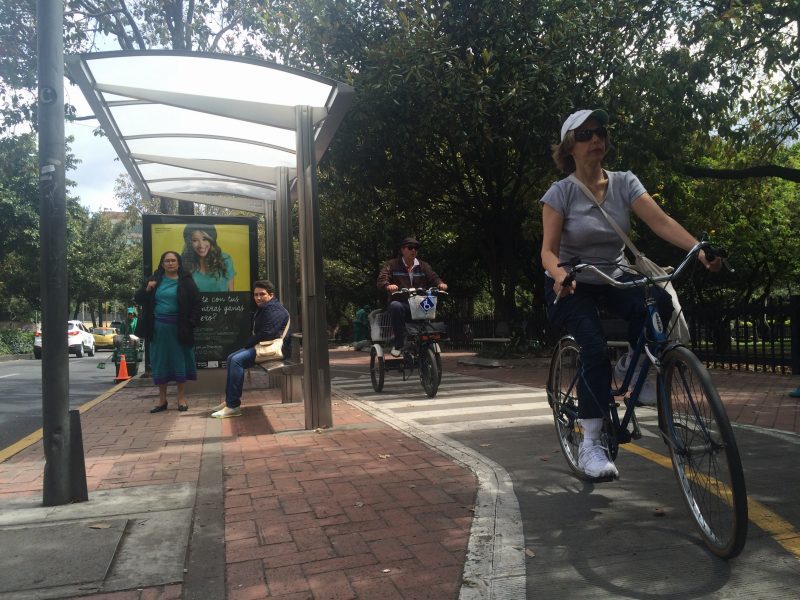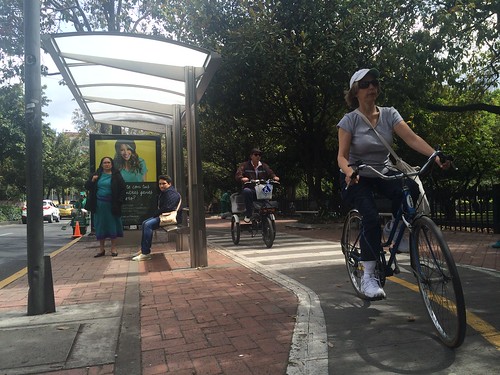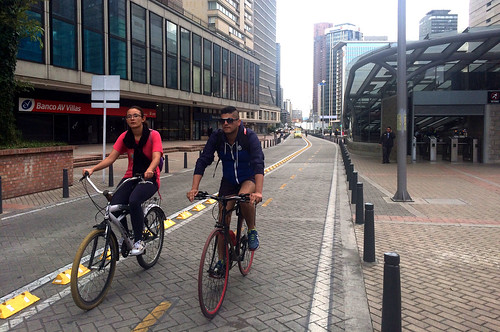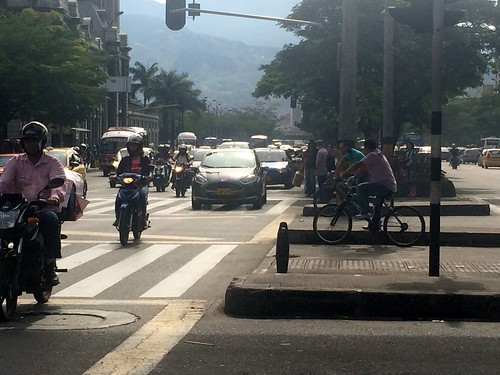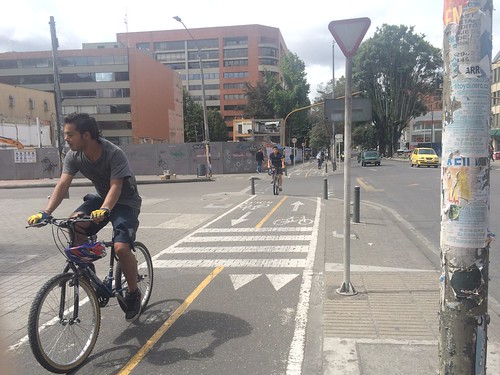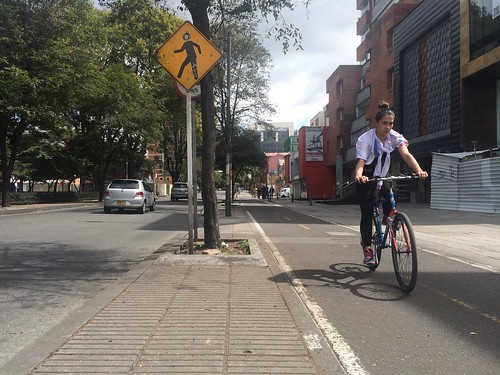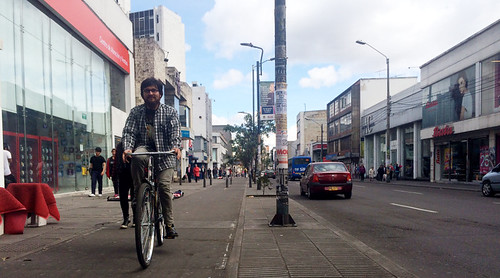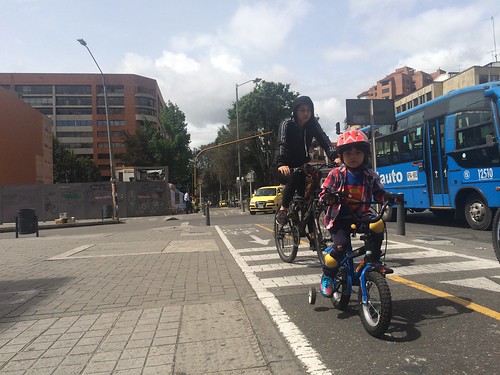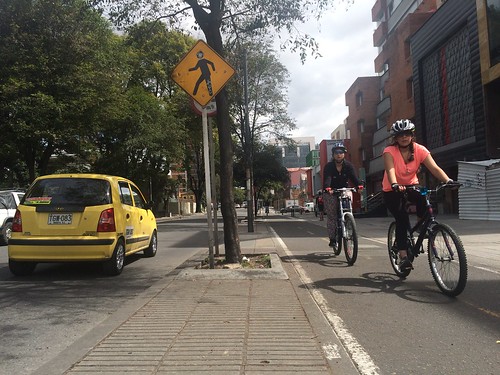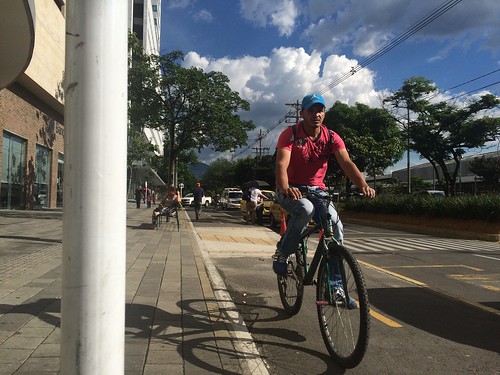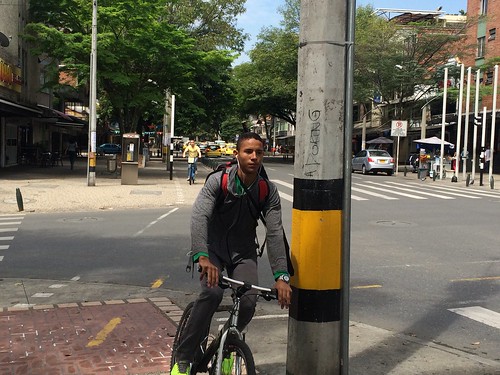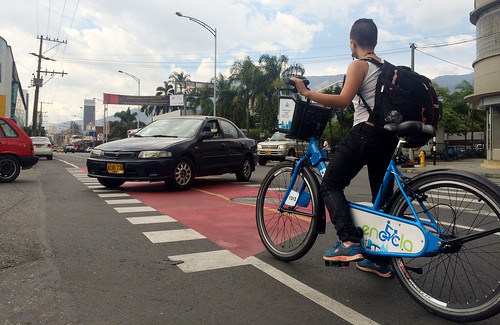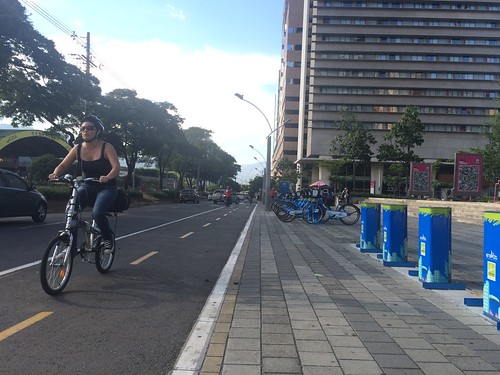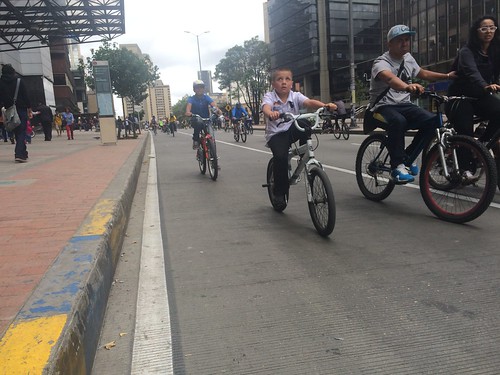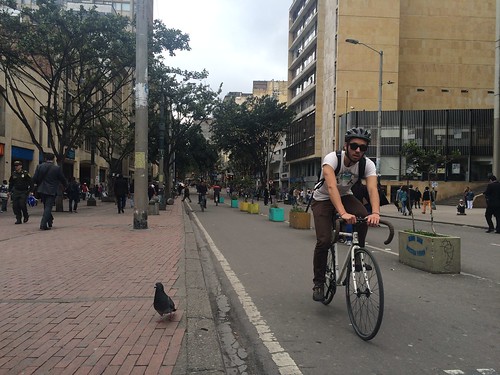It’s likely that more bike trips happen in Bogotá, Colombia, than any other city in the Western Hemisphere.
With 8.8 million residents — a number that has grown by about 12,000 every month for the last 50 years — Bogotá’s estimated 4 percent of trips by bike makes it approximately as bikey as the Portland metro area (2.2 million, with about 2.2 percent of commutes by bike) but much, much bigger.
So I was pretty pleased with the fact that my wife was as excited as I was about going there for our honeymoon. Here’s a tip, fellow nerds: don’t tell your traveling partner quite how many photos of infrastructure you think it’s appropriate to take until you’re actually on the trip.
Here’s a second tip: if, after failing to have this conversation, you still happen to have a traveling partner as cool and patient as mine was, make sure they have something to read.
(Confidential to Mo: I owe you at least one Kindle purchase.)
In any case, our 20-day trip in July to Bogotá and the other Colombian cities of Medellín, Cartagena and Campurgana — my first trip anywhere south of Mexico! — led to two posts worth of observations. This one is the first: just a series of photos of Colombians getting around Medellin and Bogota on bikes.
Though these were taken with an iPhone and aren’t as nice as Jonathan’s occasional “People on Bikes” series, we’ll use that name because the goal is similar: to capture a little slice of how people get ready for a bike trip and interact with the world around them while they’re riding.
1
2
3
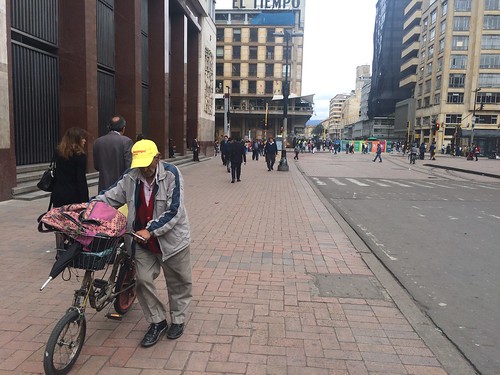
4
As you can see, a lot of these photos are from the ciclorutas, the city’s 200-mile network of protected bike lanes. Built over the last 15 years, these are allegedly inspired by Dutch design but are a very different beast. In most cases (though not all) they were carved out of the onetime pedestrian space and their width and curb cuts (or sometimes lack thereof) aren’t particularly well-suited to biking — certainly not at any high speed. They rarely do a great job of separating bike and foot traffic.
And though I’m sure we’d have learned the routes quickly if we needed to, we lost their course several times because they weren’t very well connected, signed or otherwise marked.
But here’s the thing: without them, biking in Colombia would be horrific by U.S. standards. That’s because, like almost every other country in the world, Colombia has gradually handed over most of its street space to anyone who can afford to drive a car. The shot below shows one of the many huge arterials in Medellín that offer lane after lane to motor vehicles and let people biking fend for themselves.
5
In the context of current Colombian traffic culture, it would be ridiculous to expect people to avoid driving in a painted bike lane, let alone for people driving to give bikers the thoughtfully wide berths that are (thankfully) common on Portland streets. Basically, the only way to bring biking up to a Portland level of comfort is to build protected bike lanes.
Which makes it all the more impressive, really, that that’s exactly what Bogotá and (to a lesser extent) Medellín have been doing. And their residents have certainly taken advantage of it.
6
7
8
9
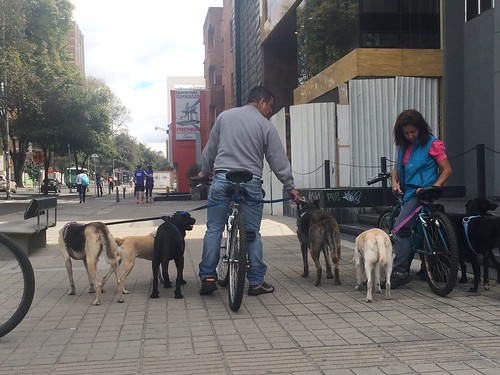
I’m not sure if this couple do this for a living or just really like dogs. Or both.
10
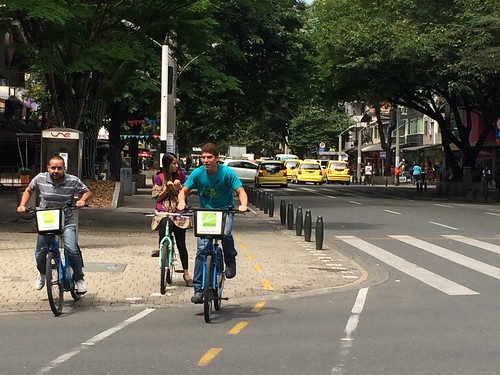
One thing that keeps these low-budget protected bike lanes more comfortable than they might be, at least in some parts of the cities, is the relatively pointy street corners. I sat alongside the corner below for a few minutes and watched every single car that turned right slow to 15 mph or less, thanks to the short turning radius built into the pavement. (Also note that in this particular intersection, there’s barely enough space for a car to hang out mid-turn without obstructing the vehicles behind it — it’s not a protected intersection but it’s getting there.)
11
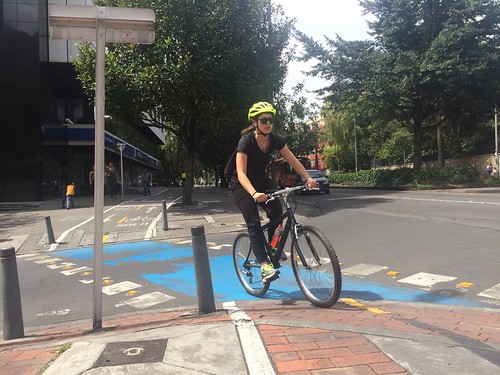
12
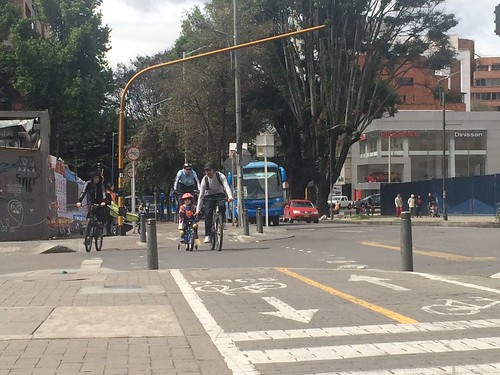
13
Advertisement
14

This bidirectional lane in a run-down area was pretty empty most of the time. Notice that it doubles as public seating (and sometimes car parking).
15
16
17
18
18
Like other leading bike cities I could mention, Bogota has been slow to create a bike sharing system. (It does have some sort of stripped-down system, with various rental locations staffed by public employees, that I never quite figured out.) That’s not the case in Medellín, which prides itself on being generally ahead of Colombia’s curve. Its system is called Encicla:
19
20
21
Some of these photos were taken during ciclovía, the open-streets tradition that began in Bogotá in the 1970s and has spread through much of the Americas, including to Portland. Bogotá holds it every Sunday, and hundreds of thousands of Bogotanos turn out every week to savor the temporarily calm streets.
22
23
24
This guy’s big sign says “Around the world for ecology and conscience” in Spanish.
25
26
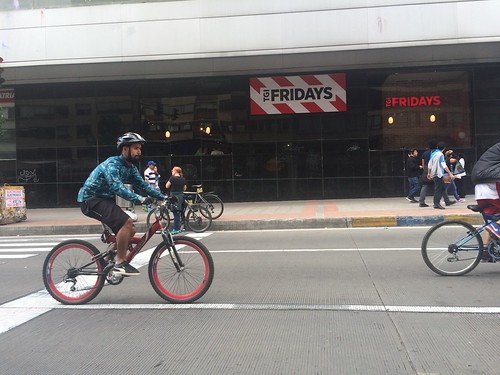
Like quite a few streets in central Bogotá and Medellín, Carrera 7 has been fully pedestrianized during most hours in the city center. There’s still a planter-protected bike lane there, but people don’t pay much attention to it. (In fact it’s sort of an annoying street to bike on, especially during ciclovía, exactly because it’s such a fantastic place to walk.)
27
28
OK, that’s your starter kit to Colombian streets. Tomorrow, I’ll share some photos that take a broader look at these Colombian cities and draw a few lessons that Portlanders and other estadounidenses should be learning from them.
